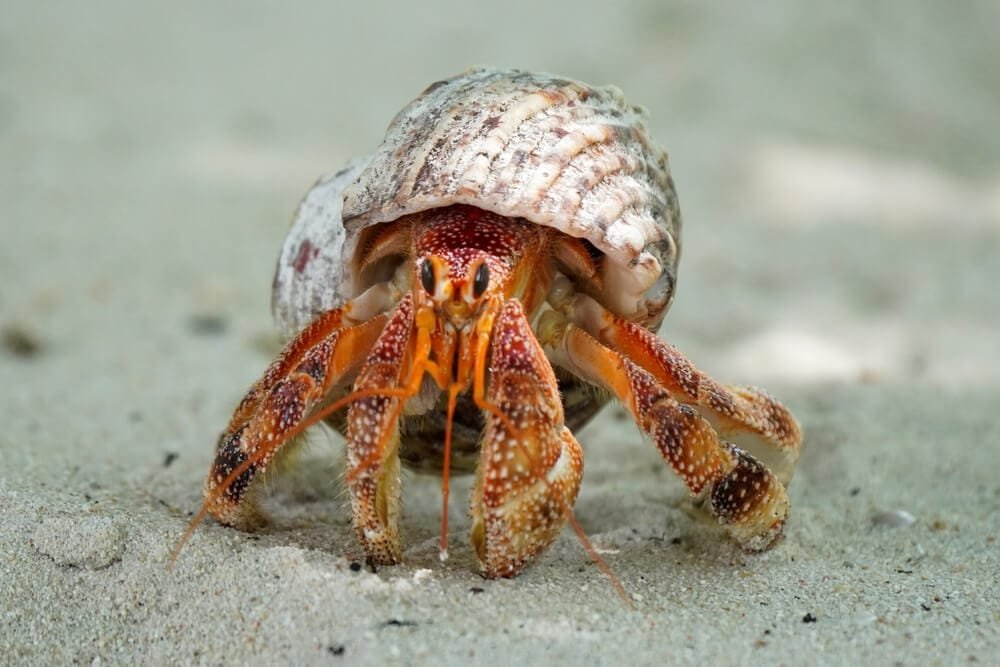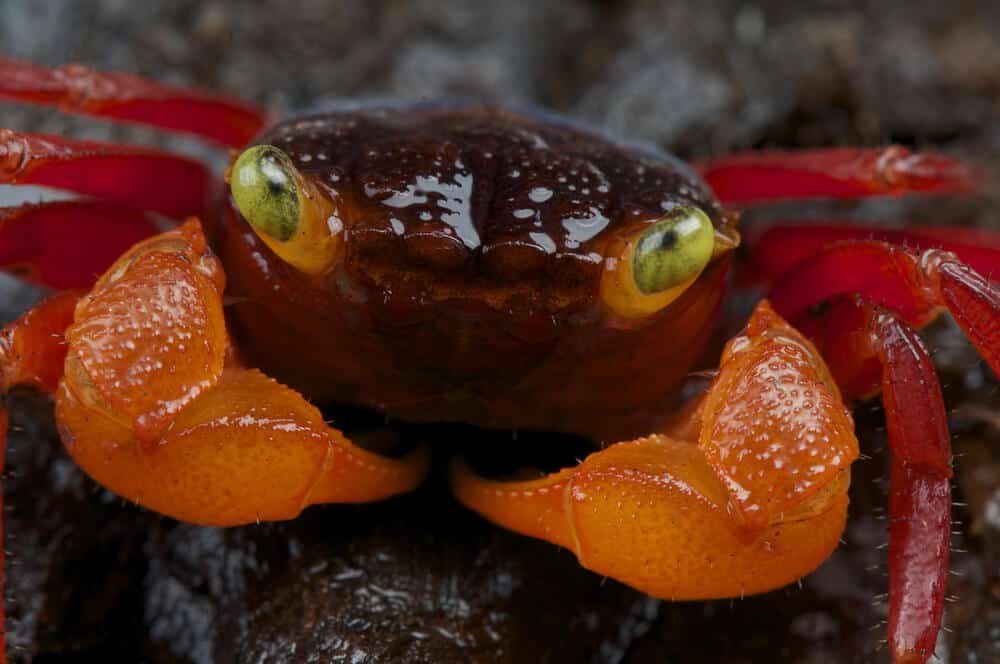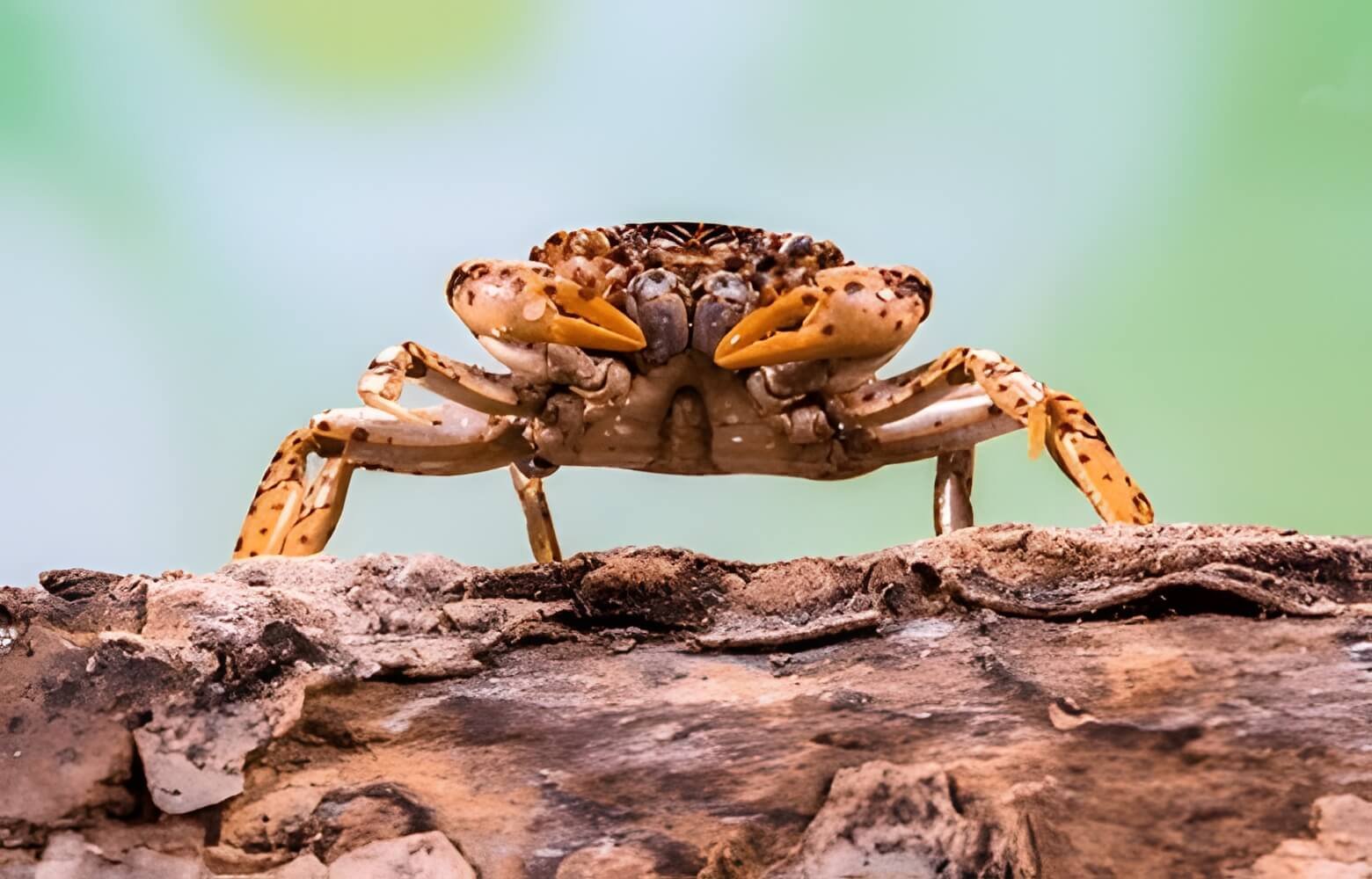If you’ve ever been captivated by the mysterious world of hermit crabs and are considering bringing one into your home, then this article is for you. Covering everything from the basics of hermit crab care to advanced topics like breeding, this comprehensive guide will walk you through each step of the process. Learn about different hermit crab species, how to set up their tank, what to feed them, how to handle and interact with them, and even how to maintain their health and well-being. By the end of this article, you’ll have all the knowledge you need to create a safe and comfortable environment for your new hermit crab companion. So, let’s dive into the fascinating world of hermit crabs and embark on this exciting journey together!
Overview of Hermit Crabs as Pets
Keeping hermit crabs as pets has gained popularity among pet enthusiasts in recent years. These unique creatures provide an interesting and low-maintenance option for those looking to add a touch of the ocean to their homes. In this comprehensive article, we will explore various aspects of hermit crab care, from setting up the tank to understanding their dietary needs and health concerns. Whether you are a beginner or an experienced hermit crab owner, this guide will provide you with valuable information to ensure the well-being of your crabby friend.
Introduction to Hermit Crabs as Pets
Hermit crabs, despite their name, don’t actually live a solitary life. In the wild, they can be found living in colonies along coastal areas. As pets, hermit crabs are relatively easy to care for and can live for up to 30 years if provided with the right environment. These small crustaceans have a soft abdomen that they protect by occupying discarded snail shells. As they grow, they need to find larger shells to accommodate their increasing size, making them fascinating and unique pets to observe.
Why People Choose Hermit Crabs as Pets
There are several reasons why hermit crabs have become popular pets. Firstly, they are relatively low-maintenance compared to other pets. Hermit crabs do not require daily walks or constant attention, making them a great choice for individuals with busy lifestyles. Secondly, they are fascinating creatures to observe. From their intricate shell changing behavior to their quirky personalities, hermit crabs provide endless entertainment. Lastly, they make great pets for those living in spaces with limited outdoor access, such as apartments or dormitories. Hermit crabs can thrive in a small tank environment, bringing a touch of nature indoors.
Hermit Crab Species
There are several species of hermit crabs, but the most commonly kept as pets are the Caribbean hermit crabs and the Ecuadorian hermit crabs. The Caribbean hermit crabs are larger in size, making them suitable for children to handle. On the other hand, the Ecuadorian hermit crabs are smaller and more sensitive to handling, making them better suited for experienced hermit crab owners. It is important to note that different species have varying care requirements, so it is essential to research the specific needs of the species you choose to ensure their well-being.
Differences in Care Requirements Among Species
While hermit crabs may belong to the same family, their care requirements can vary between species. One significant difference is the tank size needed. Generally, Caribbean hermit crabs require a larger tank due to their larger size. The Ecuadorian hermit crabs, being smaller, can thrive in smaller enclosures. Additionally, the temperature and humidity levels needed for optimal health also differ among species. Caribbean hermit crabs prefer higher humidity levels, while Ecuadorian hermit crabs can tolerate slightly lower humidity. It is crucial to research and understand the specific needs of the species you choose to ensure their well-being.
Setting Up the Tank
When setting up a tank for your hermit crab, there are several factors to consider to provide them with a comfortable and safe environment.
Determining the Appropriate Tank Size
The size of the tank is crucial for the well-being of your hermit crab. As a general rule, a tank should provide at least 5 gallons of space per hermit crab. If you plan on having multiple hermit crabs, a larger tank is recommended. Providing ample space allows your hermit crabs to move around freely and exhibit their natural behaviors.
Requirements for Setting Up a Hermit Crab Tank
To create a suitable habitat for hermit crabs, it is essential to include certain elements in the tank. These include:
- Substrate: Choose a substrate that mimics the natural environment of a hermit crab. A mix of sand and coconut fiber works well, as it provides a suitable texture for burrowing while retaining moisture.
- Hideouts: Provide various hiding spots in the tank using natural materials such as rocks, driftwood, or coconut shells. Hermit crabs need these spaces to feel secure and safe.
- Climbing opportunities: Hermit crabs are natural climbers, so including driftwood or branches for them to climb on is important. This not only provides exercise but also helps mimic their natural habitat.
- Lighting: Hermit crabs require a day and night cycle simulating their natural environment. You can achieve this by using a light timer set to a 12-hour cycle.
Choosing the Right Substrate for the Tank
The substrate in a hermit crab tank serves multiple purposes. It not only gives the crabs a place to burrow and hide but also helps maintain the necessary humidity levels. A combination of sand and coconut fiber substrate allows for easy burrowing and retains moisture, which is essential to keep the crabs’ gills moist. Avoid using substrates such as gravel or wood chips, as they can irritate and harm the sensitive underbelly of the hermit crabs.
Considering Temperature and Humidity Levels
Maintaining the correct temperature and humidity levels in the tank is crucial for the well-being of your hermit crab. The temperature should be maintained between 75-85°F (24-29°C) during the day, with a slight drop at night. Use a thermometer to monitor the temperature and adjust accordingly. Humidity levels should be around 70-80%, mimicking the hermit crab’s natural coastal habitat. Achieve this by providing a water dish and misting the tank daily with non-chlorinated water.
Tank Decor and Accessories
Creating a habitat that mimics the natural environment of hermit crabs is essential for their well-being. Providing them with suitable tank decorations and accessories adds both aesthetic appeal and functionality to their living space.
Providing Hiding Spots and Climbing Opportunities
Hermit crabs are natural burrowers and climbers. By including a variety of hiding spots and climbing structures, you provide them with opportunities to exhibit their natural behaviors. Rocks, driftwood, and coconut shells can be strategically placed throughout the tank to create interesting hiding spots and climbing areas. This not only adds visual interest to the tank but also helps reduce stress in your hermit crabs.
Suitable Tank Decorations and Plants
Adding suitable tank decorations and plants can further enhance the aesthetics of the hermit crab’s environment. Natural-looking aquarium ornaments, such as caves or rock formations, can be added to provide additional hiding spots. Live or artificial plants can also be introduced to create a more natural look and provide some shade within the tank. Ensure that any decorations or plants used are non-toxic to hermit crabs.
Importance of a Shallow Water Dish and Saltwater Pools
Water is crucial for the survival of hermit crabs. Providing a shallow water dish allows them to hydrate and refresh themselves. The dish should be easily accessible, allowing the hermit crabs to easily dip their antennae to drink water. Additionally, hermit crabs require access to saltwater for bathing and maintaining proper gill function. Creating a saltwater pool within the tank will ensure their well-being. It is important to use marine-grade salt for the saltwater pool and maintain the correct salinity levels.
Feeding and Diet
A well-balanced diet is crucial for the health and longevity of your hermit crab. Understanding their natural diet and mimicking it in captivity is key to their nutritional needs.
Understanding the Natural Diet of Hermit Crabs
In the wild, hermit crabs are scavengers and opportunistic eaters. Their diet mainly consists of decaying plant matter, fruits, nuts, and occasionally meat. They also rely on the calcium from shells and bones they find to support their exoskeleton.
Recommended Foods for Pet Hermit Crabs
In captivity, it is important to provide a variety of food options to ensure a balanced diet. Commercial hermit crab food is available and can serve as a base for their diet. However, it is recommended to supplement it with fresh fruits and vegetables such as spinach, carrots, apples, and bananas. They can also be given small amounts of cooked lean meats like chicken or fish as an occasional treat. It is important to avoid processed foods, salty snacks, and sugary treats, as they are harmful to hermit crabs.
Providing a Balanced Diet for Optimal Health
To ensure optimal health, it is vital to provide a well-balanced diet for your hermit crabs. This includes a variety of foods that cater to their nutritional needs. Calcium-rich foods such as crushed eggshells, cuttlebone, or calcium supplements should also be provided to support their exoskeleton. Additionally, ensure that the food is fresh and free of pesticides or harmful chemicals. Regularly monitor their feeding behaviors and adjust their diet accordingly to ensure they are consuming an appropriate amount of food.
Handling and Interaction
Hermit crabs are not typically known for their desire for human interaction. While they may not seek out attention like a dog or a cat, they can still be handled with care and patience.
Guidelines for Handling Hermit Crabs
When handling hermit crabs, it is important to remember a few guidelines:
- Handle with care: Hermit crabs have delicate bodies, so it is essential to handle them gently and avoid squeezing or dropping them. Hold them by cupping your hands and ensure they are not at risk of falling or being injured.
- Wash your hands: Before handling your hermit crab, it is important to wash your hands thoroughly to remove any lotions or oils that may be harmful to them.
- Observe their body language: Pay attention to your hermit crab’s behavior during handling. If they become agitated or show signs of stress, such as pinching or withdrawing into their shell, it may be best to leave them alone.
Understanding Hermit Crab Behavior
Understanding the behavior of hermit crabs can help create a safe and stress-free environment for them. Hermit crabs are nocturnal creatures, meaning they are most active at night. They are curious and will explore their surroundings when they feel secure. When stressed or threatened, hermit crabs will retreat into their shell and may even pinch if they feel threatened.
Creating a Safe and Stress-Free Environment
To ensure a safe and stress-free environment for your hermit crab, it is important to provide them with suitable hiding spots and minimize sudden loud noises or vibrations near their tank. Avoid overcrowding the tank and ensure that the temperature and humidity levels are maintained within the appropriate range. Limit handling to when necessary, focusing on observing and appreciating their natural behaviors from a distance.
Health and Common Issues
Keeping an eye on the health of your hermit crabs is essential to catch any potential issues early on. Here are some signs to watch out for and common health problems associated with hermit crabs:
Identifying Signs of a Healthy Hermit Crab
A healthy hermit crab will exhibit the following signs:
- Activity: They will be active and explore their environment.
- Healthy Shell: Their shell will be intact and free from damage or excessive wear.
- Normal Eating Habits: They will show interest in food and consume it regularly.
- Coloration: Their coloration will be vibrant, and their eyes should be clear and free from discharge.
Common Health Problems and Their Treatments
Hermit crabs can face several health issues. Here are some common problems and their treatments:
- Molting Issues: Molting is a natural process for hermit crabs, but complications can occur. If a hermit crab is unable to shed its old exoskeleton properly or gets stuck during the process, it can lead to serious health issues. Providing extra moisture and being patient during the molting process is crucial.
- Shell Damage: Shell damage can be caused by rough handling or unsuitable shell options. If a hermit crab’s shell is cracked or damaged, it is important to provide a suitable replacement shell and ensure proper healing.
- Parasites and Infections: Hermit crabs can be susceptible to parasites and bacterial infections if their tank or food is not kept clean. If you notice abnormal behavior, weight loss, or signs of infection, such as redness or discharge, consult a veterinarian specializing in exotic pets for proper diagnosis and treatment.
Preventative Measures for Keeping Hermit Crabs Healthy
To keep your hermit crabs healthy, regular maintenance and preventative measures are essential. Here are some key practices:
- Maintain a clean tank: Regularly clean the tank and remove any uneaten food or waste. Change the substrate periodically to prevent the buildup of bacteria and mold.
- Provide a suitable environment: Ensure that the temperature and humidity levels are within the appropriate range for your specific species of hermit crab. Regularly monitor these levels to prevent any drastic changes.
- Quarantine new additions: When introducing new hermit crabs to an existing tank, it is essential to quarantine them for a few weeks to monitor for any signs of illness or parasites before introducing them to your other crabs.
Tank Maintenance
Proper tank maintenance is crucial for the overall health and well-being of your hermit crabs. Regular cleaning, monitoring of temperature and humidity, and appropriate water changes are essential.
Cleaning the Tank and Changing the Substrate
Cleaning the tank involves removing any uneaten food, waste, or shells. It is important to clean the tank regularly to prevent the buildup of bacteria and fungi. Additionally, changing the substrate periodically helps maintain a clean and healthy environment for your hermit crabs.
Monitoring and Maintaining Temperature and Humidity Levels
Regularly monitor the temperature and humidity levels within the tank using a thermometer and hygrometer. Make any necessary adjustments to maintain the appropriate range for your hermit crabs. Ensure that the temperature remains stable and that humidity levels do not fluctuate significantly, as this can cause stress and health issues for your hermit crabs.
Regular Water Changes and Maintenance of Water Dishes
Water plays a vital role in the health of your hermit crabs. It is important to regularly change the water in the dish to keep it clean and free from bacteria. Additionally, ensure that the water dish is shallow and easily accessible for your hermit crabs to drink from. Monitor the water dish regularly to ensure it is always filled with fresh, dechlorinated water.
Breeding Hermit Crabs
Breeding hermit crabs in captivity can be a complex and challenging process. It requires substantial knowledge and expertise. Here is an overview of hermit crab reproduction and some considerations for breeding in captivity.
Overview of Hermit Crab Reproduction
Hermit crabs reproduce through a process known as copulation. During mating, the male crab transfers sperm to the female, who carries the fertilized eggs until they are ready to hatch. Once hatched, the larvae go through several stages of development before they can settle into a shell and become a fully-fledged hermit crab.
Challenges and Considerations for Breeding in Captivity
Breeding hermit crabs in captivity presents various challenges. Firstly, creating the ideal conditions for mating and successful egg incubation can be difficult to replicate in a tank environment. Secondly, proper care and monitoring of the eggs and larvae require time, effort, and expertise. Lastly, finding suitable homes for the offspring can also be a consideration, as hermit crabs require appropriate-sized shells as they grow.
Conclusion
In conclusion, hermit crabs make unique and captivating pets that can bring the beauty of the ocean into your home. By providing them with the appropriate tank setup, a balanced diet, and a safe and stress-free environment, you can ensure their optimal health and well-being. Regular maintenance and monitoring, along with knowledge of their specific needs and behaviors, are key to successful hermit crab keeping. With the information provided in this comprehensive article, you are well-equipped to embark on this fascinating journey of caring for hermit crabs as pets. By following the guidelines and tips provided, you will establish a rewarding and fulfilling relationship with your crabby companions.






